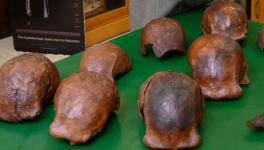Geometry of Electron Discovered for First Time

Image Courtesy: Silicon Valley Entrepreneurs. Image for representational use only
Ever since Rutherford’s model of atoms, where electrons spin around the nucleus, electrons are imagined as tiny particles having a spherical shape. But there have been no scientifically determined shape of an electron. For the first time, scientists in the University of Basel, Switzerland, have shown how an electron looks like in an artificial atom. Their newly developed method enabled them to show how much probable is it to have an electron in a space. Their results were published in PRL (Physical Review Letters). The new finding is thought to have broad implications in quantum computing and the research in quantum entanglement.
How the Geometry was Determined
Scientists in the teams headed by professors Dominik Zumbühl and Daniel Loss from the Department of Physics and the Swiss Nanoscience Institute at the University of Basel took the help of a quantum dot. The quantum dots are semi-conducting nano particles with diameters in the range of 2-10 nanometers.
Quantum dots are also considered as artificial atoms. This is because these tiny particles can serve as potential electron traps, which allow confining electrons in an area that is almost 1,000 times larger than a natural atom.
In the quantum dot, the electrons are held together by electric fields. However, the electrons in a quantum dot move within a particular space and with different probabilities that correspond to a wave function. In this way, the electrons remain in specific locations within their confinement.
The scientists used spectroscopic measurements to determine the energy levels in the quantum dot and studied the behavior of these energy levels in magnetic fields of varying strength and orientation. They also developed their theoretical model and with the help of the model, it is possible to determine the probability density of the electrons and hence the associated wave functions. They could determine it with precision on the sub-nanometer scale.
According to Daniel Loss, one of the lead scientists of the work, “To put it simply, we can use this method to show what an electron looks like for the first time”.
Implications of the Finding
One of the properties of electrons is the electron spin. It is a quantum property associated with the electrons. The electrons can spin on its axis in either clockwise or counter-clockwise manner. Electron spin is an important property for quantum computers; in fact, it is the smallest information unit (qubit) of a quantum computer. How to control this spin and how to switch it or how to couple it with other spins is a challenging task that numerous scientists across the world are scratching their heads on. The stability of a spin and entangling it with other spins depend, among other things, on the geometry of the electrons. The geometry of electrons was previously impossible to determine experimentally.
As Dominik Zumbühl, another lead scientist of the study, says—“We are able to not only map the shape and orientation of the electron, but also control the wave function according to the configuration of the applied electric fields. This gives us the opportunity to optimize control of the spins in a very targeted manner.”
Get the latest reports & analysis with people's perspective on Protests, movements & deep analytical videos, discussions of the current affairs in your Telegram app. Subscribe to NewsClick's Telegram channel & get Real-Time updates on stories, as they get published on our website.


















